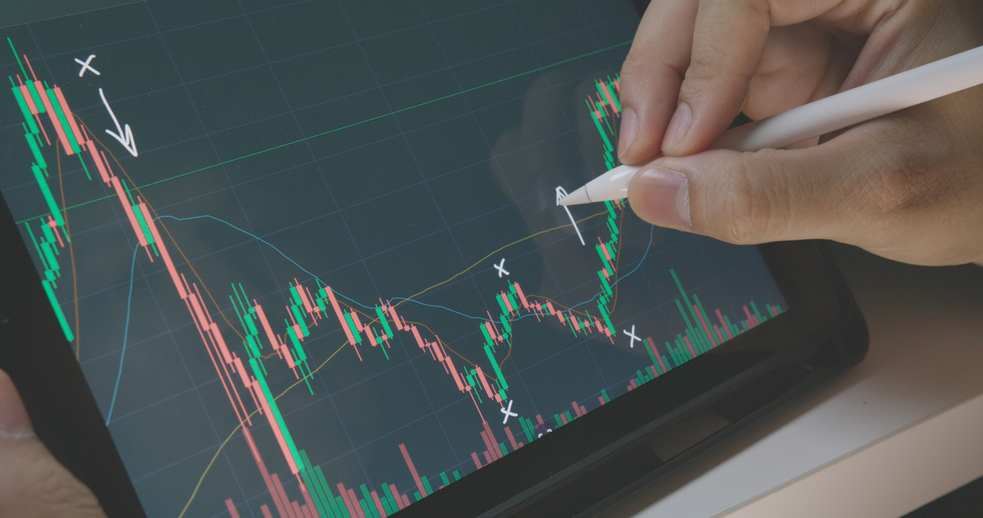Given how eventful the year has been, when publishing a review of 2023, it would be amiss to simply show the annual performances across the major asset classes since these do not portray the huge volatility that was witnessed throughout the year as well as the very surprising end to the year.
Following the very sharp downturn across equity and bond markets in 2022 as the major central banks began raising interest rates from the unprecedented low levels over several years, there was evident caution at the start of the year on how financial markets will perform amid the tightening monetary policy actions in order to control the spike in inflation. With several economists anticipating a recession in 2023, investors were clearly worried at the start of the year. However, for the equity markets, 2023 can possibly best be described as a stock market rally that was very much unexpected as the S&P 500 index rallied by 24 per cent ending the year just minimally below the previous all-time high of 3rd January 2022.
The stellar performances of the so-called Magnificent Seven — Apple, Microsoft, Alphabet, Amazon, Nvidia, Tesla and Meta Platforms — was a major highlight of the year on evident excitement over the business potential from the rise of generative artificial intelligence (AI). In fact, the Nasdaq 100 index climbed by a remarkable 54 per cent – its best annual performance since 1999.
As expected, one of the key determinants of market movements during 2023 was the interest rate decisions by the major central banks, the publication of economic data and inflation readings as well as comments by the central banks on future interest rate movements. Meanwhile, few investors may recall that we also experienced the collapse of Credit Suisse AG (one of the oldest banks in Europe) during the year shortly following the demise of some of the regional banks in the US in March 2023.
The European Central Bank (ECB) raised interest rates six times during 2023 with the deposit facility increasing from two per cent at the start of the year to a record of four per cent towards the end of September 2023. Interest rates were kept unchanged during the final two meetings of the year held in October and December.
The Federal Reserve raised the target federal funds rate on four occasions during the year with the target range rising to between 5.25 per cent and 5.50 per cent by the end of July 2023 from 4.25 per cent to 4.50 per cent at the start of the year. Interest rates in the US were kept unchanged since July 2023.
During the summer months, the major central banks were clearly advocating that they will keep interest rates ‘higher for longer’ in order to tame inflation. This had wide implications across all asset classes.
In fact, bond markets tanked as the yield on the 10-year US Treasury note jumped to above the five per cent level in mid-October (the highest level since June 2007) from circa 3.4 per cent in early April 2023 and 3.8 per cent at the start of the year. Likewise, the yield on the German 10-year bund, which is the benchmark for the eurozone, surpassed the three per cent level also in October (the highest level since 2011) from just over 2.1 per cent in early April and 2.4 per cent at the start of the year.
Equity markets also tumbled as bond yields surged, with the S&P 500 index in the US sliding by 11 per cent from the July high of 4,607.07 points to a low of 4,103.78 points on 27th October.
However, with the most recent inflation readings across the world pointing to a remarkable slowdown and fresh expectations that the major central banks will cut interest rates multiple times during the course of 2024, there was a very sharp reversal in yields during the past few weeks which sent bond prices sharply higher and equity markets rallying.
The yield on the 10-year US Treasury note sunk towards the 3.8 per cent level from a multi-year high of just over five per cent only a few weeks ago while the yield on the German 10-year bund tumbled to below the 1.9 per cent level from just above three per cent in mid-October. This resulted in a very sharp upturn in bond prices across the worldwide.
Likewise, international equity markets also experienced a very strong rally although a noteworthy development was the outperformance of several sectors when compared to the Magnificent Seven stocks that propelled the upturn in the first half of 2023. In fact, over recent weeks, the Russell 2000 index, the leading index of US small-cap companies which contains none of the Magnificent Seven, strongly outperformed the S&P 500 index. Since the recent low in mid-October, the Russell 2000 index jumped by over 26 per cent.
After such an unexpected end to the year with material movements in bond markets and equity markets, many investment banks are reassessing their projections for 2024. The timing and speed of interest rate cuts by the major central banks is a big factor that will impinge on future performance, coupled with geopolitical and political risks which remain elevated. One key risk for 2024 and the coming years is supply disruptions of commodity flows which could arise due to blockades of key shipping routes in the Red Sea and the Suez Canal. A sharp rise in global freight and shipping costs threatens to reverse recent falls in inflation following recent disruptions to transit routes.
However, one should not underestimate the continued excitement over AI and its potentially transformative prospects which could continue to have important bearings on performances of equity markets during 2024.
Read more of Mr Rizzo’s insights at Rizzo Farrugia (Stockbrokers).
The article contains public information only and is published solely for informational purposes. It should not be construed as a solicitation or an offer to buy or sell any securities or related financial instruments. No representation or warranty, either expressed or implied, is provided in relation to the accuracy, completeness or reliability of the information contained herein, nor is it intended to be a complete statement or summary of the securities, markets or developments referred to in this article. Rizzo, Farrugia & Co. (Stockbrokers) Ltd (“Rizzo Farrugia”) is under no obligation to update or keep current the information contained herein. Since the buying and selling of securities by any person is dependent on that person’s financial situation and an assessment of the suitability and appropriateness of the proposed transaction, no person should act upon any recommendation in this article without first obtaining investment advice. Rizzo Farrugia, its directors, the author of this article, other employees or clients may have or have had interests in the securities referred to herein and may at any time make purchases and/or sales in them as principal or agent. Furthermore, Rizzo Farrugia may have or have had a relationship with or may provide or has provided other services of a corporate nature to companies herein mentioned. Stock markets are volatile and subject to fluctuations which cannot be reasonably foreseen. Past performance is not necessarily indicative of future results. Foreign currency rates of exchange may adversely affect the value, price or income of any security mentioned in this article. Neither Rizzo Farrugia, nor any of its directors or employees accepts any liability for any loss or damage arising out of the use of all or any part of this article.
S&P 500: Another year of strong gains
The S&P 500 index has rallied nearly 17% so far in 2025
The bond market in 2026
In 2025, €717 million were issued on the Regulated Main Market of the Malta Stock Exchange
Institute of Directors training now available in Malta through ThinkTalent
By offering IoD’s globally respected curriculum, ThinkTalent is fulfilling its mission to be the definitive partner in strategic talent optimisation






